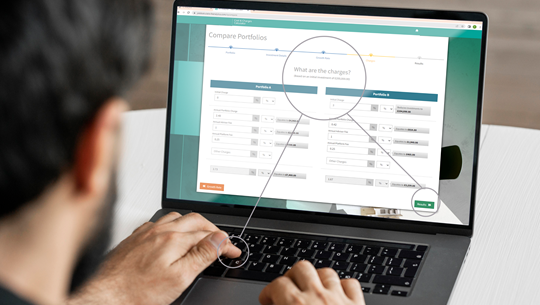The biggest changes to Global Investment Performance Standards (GIPS®) since their launch in 1999
With open-ended funds, it is easy to compare performance. You account for any changes in the price of the funds and include any income that may not already be included in that. This is because calculation of the price(s) at which you can buy or sell units or shares in a fund is strictly prescribed and is done after deducting any costs and charges. The presentation of that performance is also strictly regulated.
However, it gets more complicated with segregated portfolios that are not unitised or regularly priced, because asset managers could account for fees, income and other factors in different ways and they could also present the performance in different ways. It may also not be clear whether mandates from different providers are directly comparable. This makes it almost impossible for buyers of their services to know which managers have delivered the best returns.
Hence the first set of voluntary Global Investment Performance Standards (GIPS) was introduced in 1999 by the CFA Institute. They have previously been updated in 2005 and 2010, while the latest update in 2020 is the most significant to date.
While the updated standards came into effect at the start of 2020, the key date is really 31 December 2020, as all GIPS reports with performance ending since then must adhere to the new standards. Firms could choose to adopt the updated standards before the end of 2020, but they were not allowed to “pick’n’mix” between the 2020 version and earlier versions; once the switchover is made, the latest version must be applied in its entirety.
The 2020 update brought managers of pooled funds and alternative investments in scope, as well as asset owners who manage their own assets and don’t sell their services, but need to report comparable performance to their oversight committees. Any asset owners that also market their investment services need to meet the GIPS standards for asset managers.
There are too many changes in the 2020 GIPS standards to include in a single blog, and some are more significant than others, but some of the key changes we have found are as follows:
- Composites may be “carved-out” from a wider portfolio, but must a) include any cash element from the portfolio and b) must be representative of the composite it creates (it must include all the relevant securities from the portfolio, not just selected ones)
- If actual transaction costs are not known, estimates may be used. This is particularly important when showing “gross of fee” returns, as the transaction costs may not be identified separately by third parties that include them as part of an all-inclusive fee. But the workings behind such estimates should be clear and objective.
- Pooled funds no longer need to be turned into separate composites to be included in GIPS, but they must produce GIPS Pooled Fund Reports. This should make it easier for groups to comply with GIPS without having to create unnecessary composites to mirror their pooled funds.
- The rules around “portability” have been simplified. This occurs when companies or investment teams are taken over by another, in which case some, all or none of the previous record may be ported, as long as there is no break between the old and new provider.
- While the main performance calculation was previously the time-weighted return report (TWRR), it is now possible, subject to certain conditions, to produce a money-weighted return report (MWRR) instead. The qualify for the MWRR, the primary condition is that the manager has control of the composite’s cash flow.
In addition to the above changes, here is a small selection of other changes relevant to “Firms” (ie asset managers):
- Firms must “create composites for the firm’s strategies that are managed for or offered as a segregated account” whether they are actively marketed or not. It was felt there was some ambiguity over this in earlier versions of the standards.
- As long as the Firm has discretion to change a mandate, it may move a portfolio from one composite to another (previously this could only be done at the instigation of the client). The discretion to change the mandate must be clearly set out in the client agreement.
- Clearer disclosure of the GIPS trademark and a standard disclaimer is mandatory: “GIPS is a registered trademark of CFA Institute. CFA Institute does not endorse or promote this organisation nor does it warrant the accuracy or quality of the content contained herein.”
- Hedge funds only need to report performance with side pockets going forward, although they may continue to report without side pockets if they choose.
- Pooled funds to be included are divided into broad distribution pooled funds (BDPF) and limited distribution pooled funds (LDPF), with the former being those permitted to be marketed to the general public. Firms must keep separate lists of BDPFs and LDPFs, and GIPS Reports do not need to be provided to prospective investors in BDPFs.
- For composites or funds with multiple benchmarks, “all required information for all benchmarks” must be included in GIPS Reports, rather than just for the primary benchmark. In common with the increased focus on benchmarks for retail funds elsewhere, there are also other changes related to the use of, and changes to, benchmarks in GIPS.
Those Firms already complying with GIPS will be well aware of the changes brought in – and will in many cases be working to apply the new rules right now – but the combination of the broadening and simplifying of the rules could bring the standards into scope for asset managers who have not previously been minded to comply. Just remember that there is much more to GIPS than has been outlined here.


